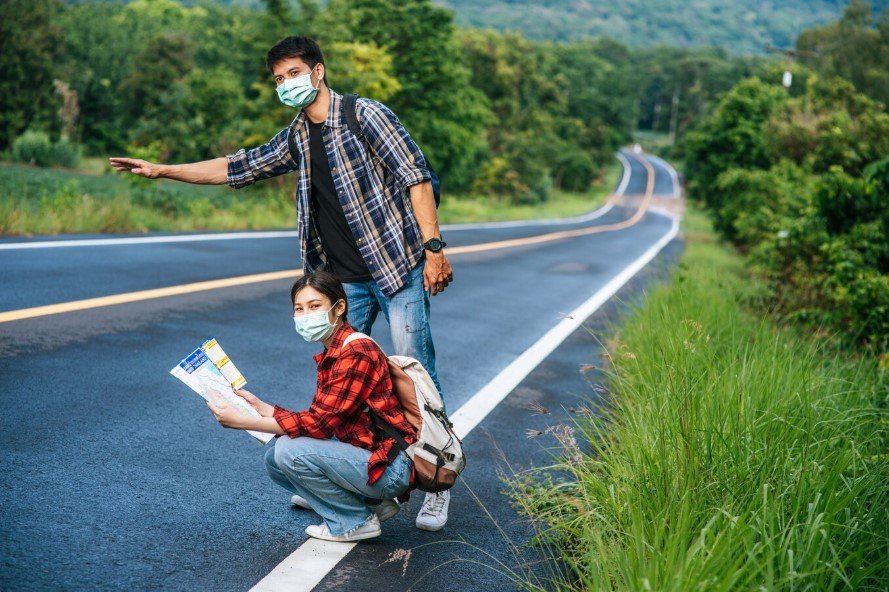It is a bucket list for most, but the extreme altitude and weather conditions can be affected by thinking ahead and carefully trying to stay healthy and avoid Acute Mountain Sickness (AMS). AMS can begin whilst you are over 2,500 meters, and the EBC trail takes you as high as 364 meters. Knowing a way to keep away from and treat AMS is crucial for a secure Everest Base Camp trek.
The most effective treatment for AMS is acclimatization. Affirm that you have at least 2 acclimatization days to your agenda (generally Namche Bazaar to Dingboche). These pauses and breaks allow your body to adapt to reduced oxygen. Additionally, when you get there, don’t ascend more than 500 meters in a day.
What is AMS, And Why does it occur so often during the Everest Base Camp Trek?
Acute Mountain Sickness (AMS)is A regular collection of responses of the body to the rapid ascent to reduced oxygen pressures at higher elevation. It’s particularly prevalent at the Everest Base Camp trek; the trail right here climbs more than five 000 meters (16,f ur hundred ft), the air is thin up there. If you come down with AMS, you may get complications, experience dizziness, vomit, lose your appetite, or have problems. And it may strike each person, no matter one’s age or level of physical fitness. Good advice, since left untreated, AMS can progress to something more dangerous, HAPE or HACE. You have to get up to speed a little on it before you go. Keep yourself hydrated, acclimatize, and listen to your body. Climb high, sleep low, and acclimatize, you guess? The greater you realize entering into, the safer your trek may be.
How do I get myself acclimatised for trekking to the Everest base camp?
Acclimatization is the technique of your body adjusting itself to low degrees of oxygen at higher altitudes, and it’s miles the number one way to save you from AMS while EBC Trek. A sound itinerary has two or more acclimatising rest days – at Namche Bazaar (3,440m) and Dingboche (4,410m), for example. But by the time you are at 3,000 meters (the equivalent of a small peak in the Pyrenees), aim to limit your night-by-night ascent to 300-500 meters. And on your rest days, just make sure to do a little walking or something, not nothing — it helps you to adapt faster. Stay hydrated, limit alcohol, and what do you need to salvage the healthful parts of meals. Try not to hurry either, however good you may be feeling, AMS will hit. If you are symptomatic, go down immediately. Diamox (acetazolamide) is good for acclimatization, but don’t overdo it. Not only does focusing on acclimatizing keep you safbut it also, but it also improves your likelihood of reaching Everest Base Camp. Diamox (acetazolamide) is good for acclimation, but don’t overdo it. Conditions can be affected by thinking ahead and carefully trying to stay healthy and avoid Acute Mountain Sickness (AMS). AMS can begin whilst you are over 2,500 meters, and the EBC path takes you as high as 5,364 meters. Understanding the way to keep away from and deal with AMS is important for a secure trek.
What is AMS, And Why does it occur so Often While On the Everest Base Camp Trek?
Acute Mountain Sickness (AMS) is A normal series of responses of the body to the rapid ascent to decreased oxygen pressures at higher elevation. It’s especially widespread at the Everest Base Camp trek; the path here climbs over five 000 meters (sixteen, four hundred feet), the air is genuinely thin up there. In case you come down with AMS, you would possibly get headaches, experience dizziness, vomit, lose your urge for food, or breathe with difficulty. And it could strike absolutely everyone, no matter one’s age or level of bodily fitness. Good advice, since left untreated, AMS can progress to something more dangerous, HAPE or HACE. You have to get up to speed a little on it before you go. Keep yourself hydrated, acclimatize, and listen to your body.
How do I get myself acclimatised for trekking to the Everest base camp?
A sound itinerary has two or more acclimatising rest days – at Namche Bazaar (3,440m) and Dingboche (4,410m), for example. But by the time you are at 3,000 meters (the equivalent of a small peak in the Pyrenees), aim to limit your night-by-night ascent to 300-500 meters. And on your rest days, just make sure to do a little walking or something, not nothing — it helps you to adapt faster. Stay hydrated, limit alcohol, and what do you need to salvage the healthful parts of meals. Try not to hurry either, however good you may be feeling, AMS will hit. If you are symptomatic, go down immediately.
Is it necessary to take Diamox for the Everest base camp trek?
By acidifying the blood, it, in turn, helps the body take up oxygen more efficiently, making you breathe more heavily. Most trekkers take either 125 or 250 mg twice a day, beginning a day or two before they reach 3,000 meters. It is a significant aid, but should never replace slow movement and acclimatization. Make certain you ask your health practitioner earlier than using it, especially in case you’re allergic to sulfa pills or have specific health conditions. Aspects and consequences may want to consist of wanting to pee loads, pins and needles in your fingers or toes, and feeling a bit unwell. So,o in case you are going up slowly, hydrating, being attentive to your body, you can now not want it. However, saving it as a backup file can be a slight comfort. It’s a personal decision that you should discuss with a doctor. Also, do take Diamox, go gradually up, and take some R&R so when you get to the top, you get the full punch!
What to eat during the EBC Trek in Nepal to remain healthy?
What you eat is also very important if you don’t want to get AMS (acute mountain sickness) when you trek. Carbs are easy to digest, and they can help your body metabolize oxygen at higher altitudes. Now, eventually, at the massive trekking trails, maximum teahouses serve dal bhat (rice, lentils, veggies), noodle soups (highly spiced garlic is the same old), potatoes in a selection of incarnations and a few sort of pasta (yak cheese ravioli or macaroni are trendy), all of which are exquisite resources of carbohydrates. Whilst you can, contain sparkling results and vegetables. You might also “choose to eat smaller meals and eat more often to help sustain that same energy level.” Easy snacks are great for you to bring and give you a quick boost of energy. And avoid alcohol; it can dry you out, and so can too much caffeine. Play it safe, eat only cooked food, and drink only purified or boiled water. Diet Our bodies are fuelled by great food, providing us with energy, recovery, and focus (alof l which help in the trek, EBC)
What Kind of Shape and Experience Do I Need to Have to Avoid Getting AMS?
Yes, we’re fit and acclimatized, but that also does not preclude people from getting AMS (Acute Mountain Sickness). The source of AMS is not a condition of fitness, but of reduced oxygen at high altitude. And fittingly, some of those are the most active young, strong people, who, feeling powerful, hike themselves either at too fast a pace (where they feel in power to do so) or without consideration or proper preparation, and are the most susceptible to AMS.
Is It Difficult to Breathe at the Everest Base Camp?
Most trekkers start to feel the effects of altitude at about 3,000m – huffing and puffing more, shortness of breath, tiredness. That’s pretty much par for the course when you’re up high.
Summary: Staying fit on your Everest Base Camp Hike
It’s not just about fitness for the Everest base camp trek, it’s also about the reading and the attitude, and taking care of yourself. Fair enough, High Altitude Sickness, AMS happens a bit, but it is easily preventable if you take care.
Ensure your hygiene game is strong, bring a good first-aid kit you can rely on when needed, and abide by the ‘rules’ of safe treks. As long as you are well prepared and have the right approach, you too can visit EBC and stay healthy and enjoy the trek, and your time at EBC. 🌄💪





